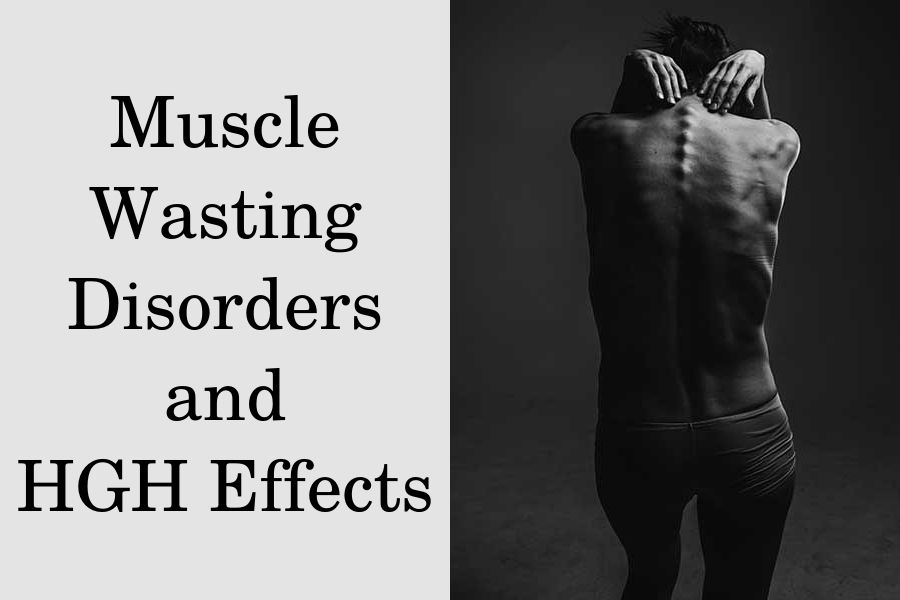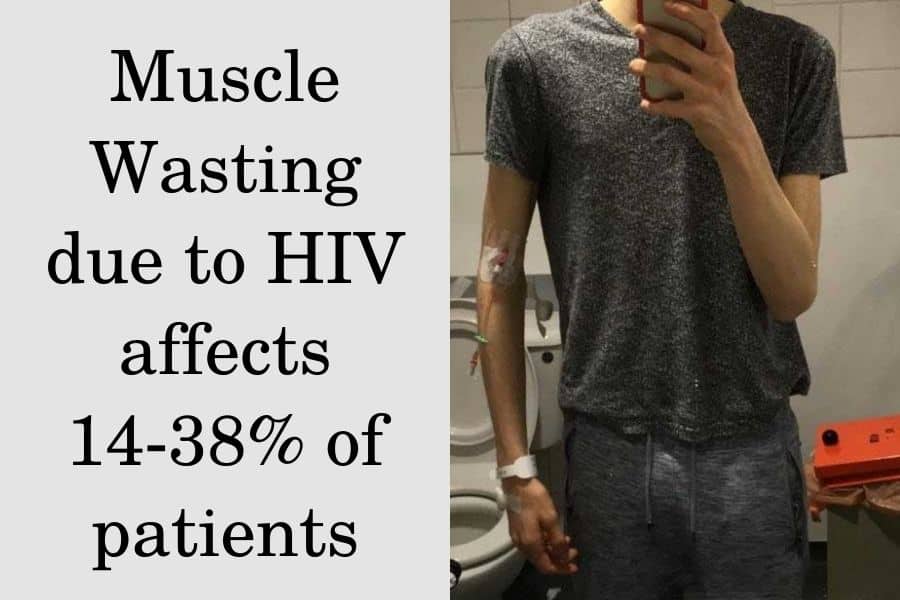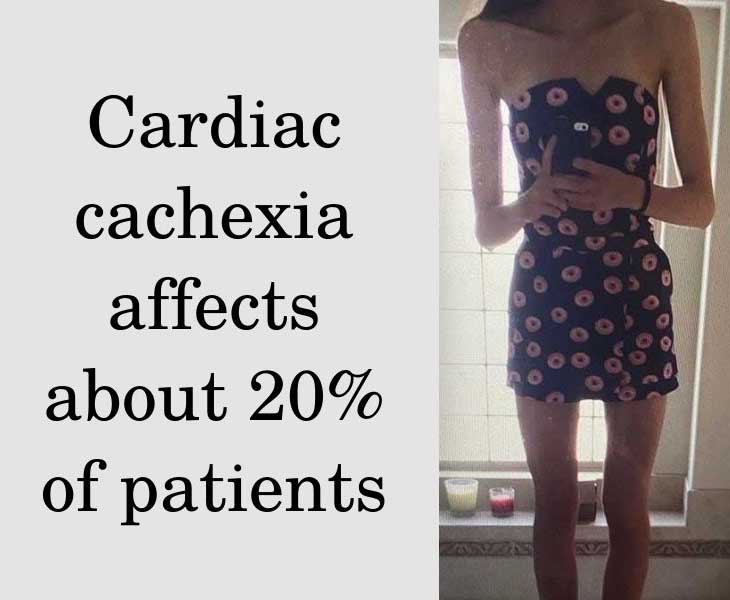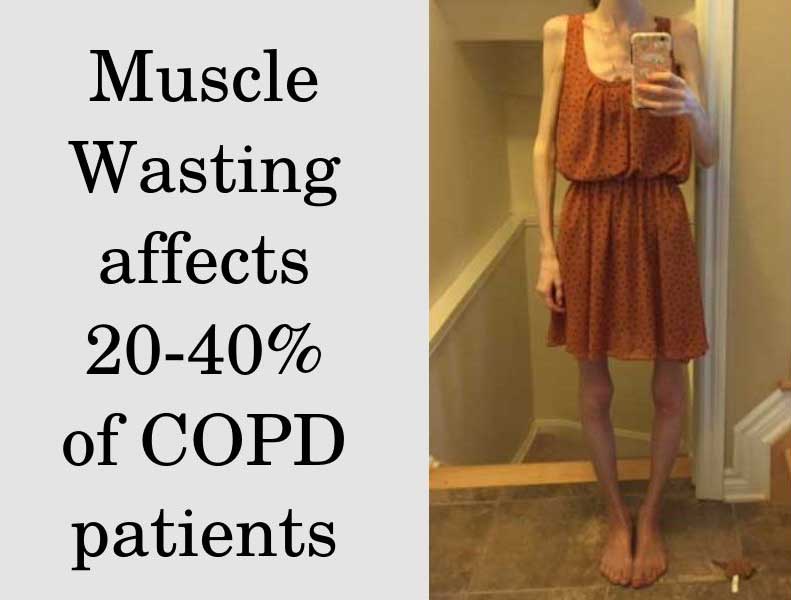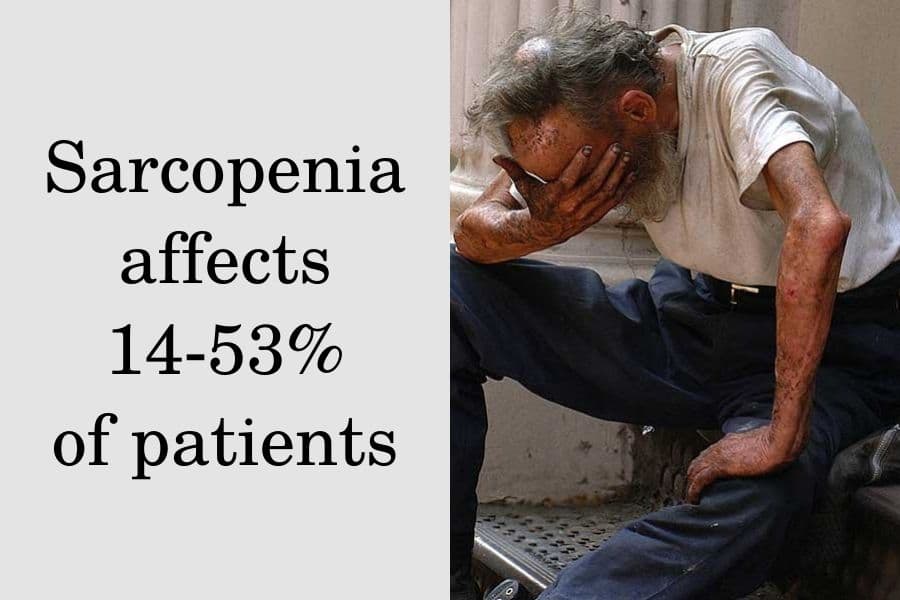Muscle wasting is often the terminal complication of the most common and debilitating chronic diseases. It develops as a part of a complex muscle wasting syndrome called cachexia.
The condition manifests with an involuntary loss of weight at the expense of muscle and lean body mass rather than fat. Patients complain of progressive muscle loss and weakness that can’t be entirely reversed with diet or lifestyle changes.
The medical causes of cachexia include serious diseases associated with high systemic inflammation and cytokine release. Examples include HIV/AIDS, cancer, chronic heart failure (CHF), chronic obstructive pulmonary disease (COPD), and others.
Cachexia affects about 1% of the population worldwide and over 5 million people in the US alone
Managing cachexia is challenging and usually requires a combination of lifestyle changes, appetite stimulation, and anabolic medications.
One of the best drug candidates is recombinant human growth hormone due to its anabolic and muscle-sparing effects as well as favorable safety profile. It’s already been approved for therapy in some forms of muscle wasting.
If you experience sudden unexplained weight loss and weakness, make sure to consult with a licensed medical doctor as soon as possible in order to receive the prompt diagnosis and treatment you may need.
HIV Wasting Syndrome
Muscle wasting is one of the most serious complications of HIV/AIDS. According to studies it affects between 14 and 38% of patients even when they are receiving a complete anti-HIV treatment.
Scientists define it as involuntary weight loss that’s greater than 10% of normal weight for the last 12 months or more than 5% for the last 6 months. Chronic diarrhea, weakness, and fever lasting over 1 month are also commonly included in the definition.
Muscle wasting in HIV/AIDS may occur due to several reasons:
- increased metabolism
- gastrointestinal syndrome in AIDS leading to malabsorption
- reduced appetite and ability to chew or swallow
- high levels of cytokines and systemic inflammation
- hormonal problems such as growth hormone resistance and low IGF-1
Patients complain of muscle weakness and inability to perform day-to-day tasks such as walking or climbing stairs. Less common causes of muscle weakness in AIDS patients may include rare muscle conditions such as polymyositis.
Furthermore, cachexia is associated with an increased incidence of other complications and elevated mortality in AIDS/HIV patients.
Currently, the main treatment is the standard anti-HIV therapy, also called antiretroviral therapy (ART). The FDA has approved the use of HGH injections with the brand name Serostim in HIV/AIDS-associated wasting in addition to ART.
In addition, appetite stimulants and other anabolic medications may be added.
The most common appetite stimulant used in AIDS patients is dronabinol. It is a man-made form of tetrahydrocannabinol (THC) – one of the active substances in marijuana.
How GH treatment helps HIV/AIDS-associated wasting patients
HGH injections provide potent muscle-sparing effects in HIV/AIDS patients with a low risk of adverse reactions. The therapy effectively counteracts the GH resistance in these patients and normalizes IGF-1 levels in the body.
The standard HGH dosage is 0.1 mg/kg daily and it should not exceed 6 mg per day. Studies reveal that 12-week therapy with such doses led to a 3-kg increase in lean body mass on average in 178 HIV-infected patients.
Furthermore, another 6-months study also showed that growth hormone increased the immune cell count which is a marker of improved immune system function in HIV patients.
In a subset of patients with HIV/AIDS, muscle wasting is accompanied by an abnormal distribution of fat, called lipodystrophy.
The typical pattern involves a significant accumulation of fat around the abdomen which is associated with suppressed growth hormone production by the pituitary gland.
The presence of lipodystrophy in combination with other risk factors leads to biochemical growth hormone deficiency (GHD) in about a third of patients.
Trials with lower doses such as 1 mg per day have shown that HGH therapy can effectively reverse lipodystrophy and reduce fat. At the same time, the treatment is effective in increasing lean body mass as soon as 1 month after starting HGH therapy.
Muscle wasting in patients with chronic heart failure (cardiac cachexia)
Evidence reports that chronic heart failure (CHF) affects more than 6 million people in the US and 50% survive less than 5 years after diagnosis.
The condition can occur as a complication of most cardiovascular diseases, including coronary heart disease, hypertension, cardiomyopathy, myocarditis, etc. It’s also a possible complication of long-term alcoholism and anemia.
The proper diagnosis of CHF requires ECG and ultrasound (echocardiogram) performed by a medical specialist in cardiology. Furthermore, your doctor may test your N-terminal-pro B-natriuretic peptide (NT-pro-BNP) levels, which is a sensitive biomarker for CHF.
Symptoms include tiredness, weakness, loss of appetite, rapid heart rate, and chest pain. Depending on the type of heart failure the condition may also present with shortness of breath, edemas, or both.
Studies report that CHF leads to muscle wasting and cachexia in about 20% of the affected patients. The presence of cachexia is associated with a poor prognosis and increased mortality.
Scientists suggest that the wasting occurs due to increased systemic inflammation which leads to increased muscle catabolism. Furthermore, CHF patients often develop a resistance to growth hormone, which leads to reduced IGF-1 levels.
In many cases, CHF can be prevented by a healthy lifestyle that ensures normal cardiovascular function. This involves eating a balanced diet, maintaining optimal weight, and exercising regularly.
Can HGH treatment help with cardiac cachexia?
Currently, growth hormone is not approved for use in CHF. Yet, the medication has been widely researched in patients with heart failure and muscle wasting.
Case studies report a substantial increase in body weight after short-term HGH therapy in patients with cachexia due to CHF. The patients took doses ranging between 3.3 and 4.6 mg per day for 1-3 weeks.
Furthermore, lower doses such as 0.6 – 1.2 mg per day are also effective in improving several cardiac function parameters. In the majority of reports, GH therapy led to improvements as soon as 3 months after treatment initiation.
Researchers also suggest that GHD is rather common amongst patients with CHF – over 30% of all patients had the deficiency. Correcting GHD via growth hormone can significantly improve the quality of life, physical capacity, and cardiac function in this subset of patients.
Muscle wasting in chronic obstructive pulmonary disease (COPD) patients
About 15 million people in the US alone suffer from COPD. The condition is defined as airflow limitation, usually due to emphysema or chronic bronchitis.
The main symptoms are shortness of breath and cough. Unfortunately, the complaints in COPD progressively worsen and may lead to cachexia.
According to studies, 20-40% of all COPD patients experience muscle wasting which further impedes breathing and restricts physical capacity. Furthermore, research suggests that cachexia reduces survival in these patients by half.
The mechanism of muscle wasting in COPD patients is related to reduced oxygen levels in the blood which leads to increased levels of oxidative stress and systemic inflammation.
The standard treatment of COPD requires intermittent or continuous oxygen therapy. In most cases, COPD can be prevented by avoiding smoking and using protection when working in an environment with dangerous fumes or dust.
Can HGH therapy help with muscle wasting in COPD patients?
HGH injections are not approved by the FDA for therapy in patients with COPD.
Nevertheless, studies report that the therapy may provide benefits in terms of muscle mass. The majority of trials involved 0.05 mg/kg HGH taken daily for 3 weeks.
One of the studies reported an increase in lean body mass with more than a kilogram as soon as the first week of growth hormone therapy as well as improvement in inspiratory muscle strength.
Furthermore, GH treatment can induce a sustained positive nitrogen balance, decreased glucose oxidation, increased fat oxidation, and higher energy expenditure.
Another trial also reported double the lean mass gain compared to a high-calorie diet alone after 3 weeks. Yet, the medication did not improve respiratory function or physical capacity.
HGH therapy is approved for other conditions associated with reduced pulmonary function and obstruction such as Prader-Willi Syndrome.
Research shows that 6 months of growth hormone treatment resulted in significantly improved forced expiratory flow, vital capacity and pulmonary reserve.
Sarcopenia (loss of muscle mass in elderly)
Muscle wasting may also take place as a part of the aging process, in which case it differs from cachexia.
Instead, the condition is called sarcopenia and its occurrence depends on several factors including exercise level, diet, and the presence of chronic conditions.
The condition is characterized by substantial loss of muscle mass combined with reduced walking speed and grip strength.
The main complaints include muscle loss, weakness, and walking or climbing stairs. In some cases, the wasting may be associated with fat gain which further impedes the physical abilities of the patient.
Studies report that the incidence of sarcopenia ranges from 14% in those below 70 years of age to 53% in those above 80 years of age. Older adults with sarcopenia have higher morbidity and mortality compared to their peers.
The exact causes of sarcopenia are not fully understood yet but scientists suspect several mechanisms, such as:
- the replacement of fast-twitch muscle fibers with slow-twitch fibers
- fibrosis and increase in muscle deposits in muscles
- changes in muscle metabolism
- hormonal changes such as declining HGH synthesis
The process may be slowed down or prevented by a combination of exercise and dietary intervention. Maintaining good physical activity appears to be the most important factor in reducing the risk of sarcopenia in the elderly.
Can HGH treatment prevent or treat sarcopenia?
Currently, no medications are approved for use in sarcopenia, despite the fact that the condition is officially recognized as a medical disease.
Scientists have investigated several potential treatments including the use of HGH injections as an anabolic and muscle-sparing agent.
One small study in 10 malnourished elderly people reported that 3 weeks of HGH therapy led to 2.2 kg weight gain on average. The dosage was 0.1 mg/kg per day.
Even trials with a lower dose – 0.03 mg/kg per day showed significant improvement after 4 weeks of therapy in malnourished older adults.
The patients gained 1.5 kg in lean mass on average and experienced improved walking speed and hemoglobin levels. The improvements diminished 8 weeks after stopping HGH therapy.
Get a free consultation with our medical expert for any questions about hormone replacement therapy

